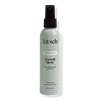What's inside
What's inside
 Key Ingredients
Key Ingredients

No key ingredients
 Benefits
Benefits

 Concerns
Concerns

 Ingredients Side-by-side
Ingredients Side-by-side

Water
Skin ConditioningMagnesium Chloride
Sodium Polyitaconate
Parfum
MaskingCetrimonium Chloride
AntimicrobialPentylene Glycol
Skin ConditioningPropanediol
SolventHydrolyzed Rice Protein
Skin ConditioningCaprylyl Glycol
EmollientAdansonia Digitata Seed Extract
Skin ConditioningAmaranthus Caudatus Seed Extract
Skin ConditioningPanthenol
Skin ConditioningTrisodium Ethylenediamine Disuccinate
Ethylhexylglycerin
Skin ConditioningSodium Chloride
MaskingRosmarinus Officinalis Leaf Extract
AntimicrobialBiotin
AntiseborrhoeicBenzyl Alcohol
PerfumingBeta-Caryophyllene
MaskingLavandula Hybrida Oil
EmollientLimonene
PerfumingLinalool
PerfumingLinalyl Acetate
MaskingVanillin
MaskingWater, Magnesium Chloride, Sodium Polyitaconate, Parfum, Cetrimonium Chloride, Pentylene Glycol, Propanediol, Hydrolyzed Rice Protein, Caprylyl Glycol, Adansonia Digitata Seed Extract, Amaranthus Caudatus Seed Extract, Panthenol, Trisodium Ethylenediamine Disuccinate, Ethylhexylglycerin, Sodium Chloride, Rosmarinus Officinalis Leaf Extract, Biotin, Benzyl Alcohol, Beta-Caryophyllene, Lavandula Hybrida Oil, Limonene, Linalool, Linalyl Acetate, Vanillin
Ingredients Explained
These ingredients are found in both products.
Ingredients higher up in an ingredient list are typically present in a larger amount.
Parfum is a catch-all term for an ingredient or more that is used to give a scent to products.
Also called "fragrance", this ingredient can be a blend of hundreds of chemicals or plant oils. This means every product with "fragrance" or "parfum" in the ingredients list is a different mixture.
For instance, Habanolide is a proprietary trade name for a specific aroma chemical. When used as a fragrance ingredient in cosmetics, most aroma chemicals fall under the broad labeling category of “FRAGRANCE” or “PARFUM” according to EU and US regulations.
The term 'parfum' or 'fragrance' is not regulated in many countries. In many cases, it is up to the brand to define this term.
For instance, many brands choose to label themselves as "fragrance-free" because they are not using synthetic fragrances. However, their products may still contain ingredients such as essential oils that are considered a fragrance by INCI standards.
One example is Calendula flower extract. Calendula is an essential oil that still imparts a scent or 'fragrance'.
Depending on the blend, the ingredients in the mixture can cause allergies and sensitivities on the skin. Some ingredients that are known EU allergens include linalool and citronellol.
Parfum can also be used to mask or cover an unpleasant scent.
The bottom line is: not all fragrances/parfum/ingredients are created equally. If you are worried about fragrances, we recommend taking a closer look at an ingredient. And of course, we always recommend speaking with a professional.
Learn more about ParfumWater. It's the most common cosmetic ingredient of all. You'll usually see it at the top of ingredient lists, meaning that it makes up the largest part of the product.
So why is it so popular? Water most often acts as a solvent - this means that it helps dissolve other ingredients into the formulation.
You'll also recognize water as that liquid we all need to stay alive. If you see this, drink a glass of water. Stay hydrated!
Learn more about Water